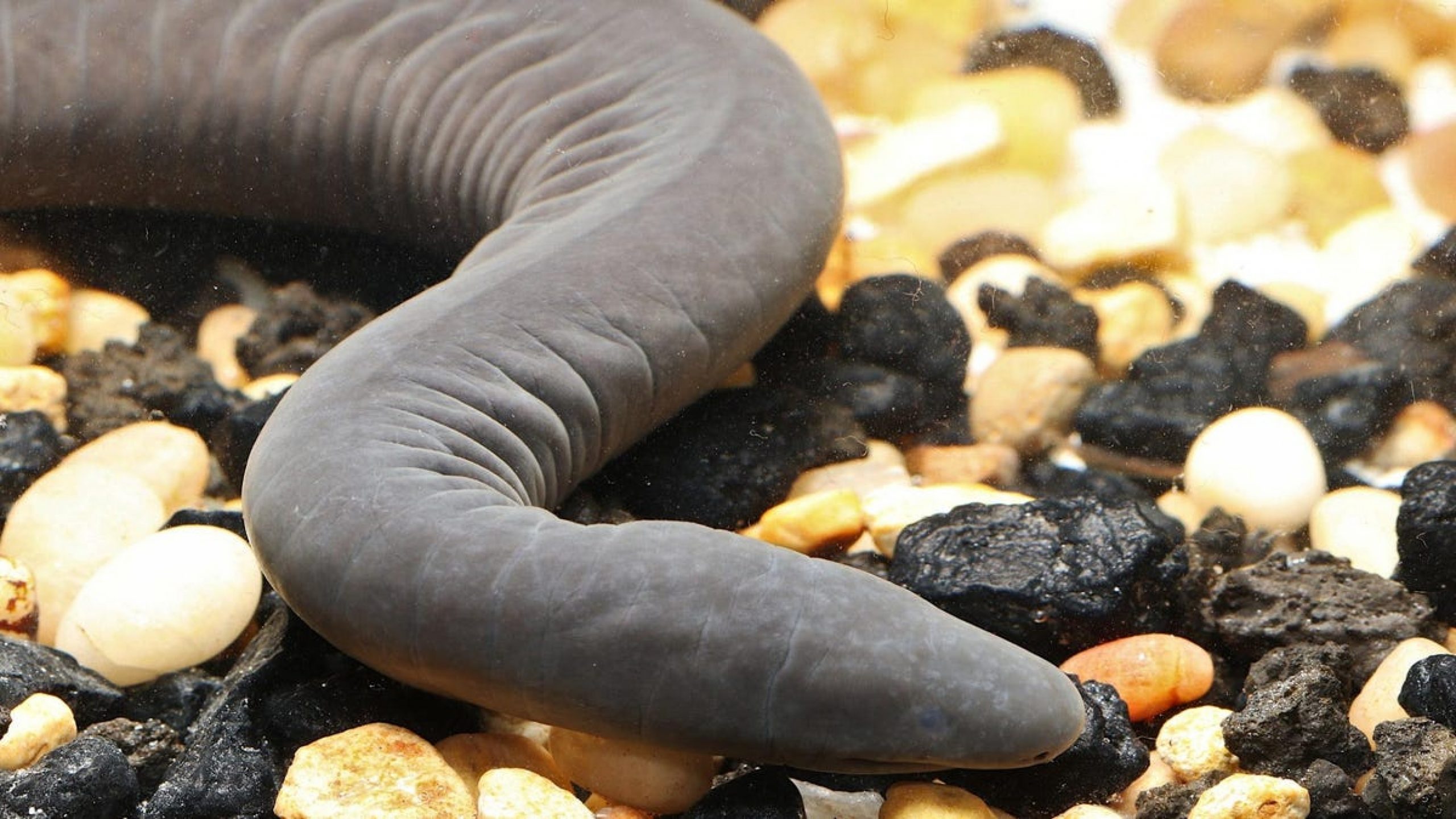Freaky ‘Penis Snakes’ Have Finally Made It to the U.S., and of Course They Chose Florida

DNA analysis confirms that an eel-like creature pulled from a Florida canal two years ago is a caecilian, otherwise known as the “penis snake.” The same canal has since yielded several other specimens, leading to concerns that the non-native amphibian has taken root in the United States.
“To our knowledge, this represents the first record of a caecilian in Florida or anywhere else in the United States,” declares new research published in Reptiles & Amphibians.
The 2-foot-long specimen was captured by members of the Florida Fish and Wildlife Commission in Miami’s Tamiami Canal, also known as the C-4 Canal, on November 7, 2019. Personnel with the FWC were conducting a routine survey of the canal when they netted the single live specimen in shallow waters near Miami International Airport.
The animal eventually died in captivity as attempts to feed it failed. The specimen was then sent to the Florida Museum of Natural History for further analysis, where geneticists identified the species as Typhlonectes natans. The DNA analysis helped to distinguish this specimen from a similar-looking species, Typhlonectes compressicauda, which is widespread in South America. More commonly referred to as a Rio Cauca caecilian, Typhlonectes natans are native to Columbia and Venezuela. Since the capture of this unsightly little guy, FWC members have received several more specimens, along with reports of sightings in the C-4 Canal.
G/O Media may get a commission
Caecilians aren’t picky eaters, scavenging and preying upon an assortment of small animals. One species of terrestrial caecilian, Siphonops annulatus, might even be venomous. In the Western Hemisphere, their range extends as far north as southern Mexico, and they can also be found in tropical parts of Africa and southeast Asia. The ancestors to modern caecilians lived in North America roughly 170 million years ago, but apart from these recent sightings, the creatures aren’t known to inhabit this part of the world. Caecilians prefer slow-moving bodies of warm and shallow water with aquatic vegetation.

“Parts of the C-4 Canal are just like that,” Coleman Sheehy, manager of the Florida Museum’s herpetology collection and the first author of the new study, explained in a statement. “This may be an environment where this species can thrive.”
As to how a caecilian ended up in the Miami canal, the researchers suspect the dumping of unwanted pets. Indeed, Typhlonectes natans is the most popular species in the caecilian pet trade, and they’re capable of breeding in captivity.
Important next steps will be to determine how many caecilians are now living in the canal, how far they’ve spread, and whether this species has established itself in the canal. The potential ecological impact of this non-native species is not yet known, representing a further avenue of research.

“Very little is known about these animals in the wild, but there’s nothing particularly dangerous about them, and they don’t appear to be serious predators,” said Coleman. “They’ll probably eat small animals and get eaten by larger ones. This could be just another non-native species in the South Florida mix.”
Caecilians are shy and have very poor eyesight, though a specialized sense organ located between their eyes and nostrils helps them locate food. Some species like to burrow underground, but Typhlonectes natans prefers fresh water. These animals aren’t snakes or worms, and instead belong to the Gymnophiona order of amphibians. The more familiar frogs, toads, salamanders, and newts belong to another order entirely.
Sadly, Florida is no stranger to non-native species. The state recently banned the sale of invasive reptiles, as escaped iguanas and snakes have proliferated out of control.

